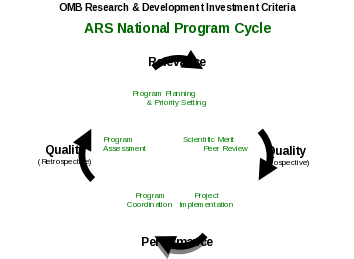NPS Supporting Statement B
NPS Supporting Statement B.docx
ARS Animal Health National Program Assessment Survey Form
OMB: 0518-0042
Supporting Statement B: Collections of Information Employing Statistical Methods
Describe (including a numerical estimate) the potential respondent universe and any sampling or other respondent selection method to be used. Data on the number of entities (e.g., establishments, State and local government units, households, or persons) in the universe covered by the collection and in the corresponding sample are to be provided in tabular form for the universe as a whole and for each of the strata in the proposed sample. Indicate expected response rates for the collection as a whole. If the collection had been conducted previously, include the actual response rate achieved during the last collection.
This information collection does not employ sampling methods. This is a census survey of the customers, partners, and stakeholders that have participated in the ARS Animal Health Research Workshops or otherwise provided input to the program over the last 5 years. The population, maintained in a database at ARS, consists of some 300 customers, stakeholders, and partners of the ARS AHNP, including producers and producer representatives, consultants, industry representatives, and university researchers. The expected response rate is 80%, as the respondents have a high degree of familiarity and involvement with the program they are being asked to assess. This collection has been conducted previously.
2. Describe the procedures for the collection of information including:
Statistical methodology for stratification and sample selection,
A statistical methodology for sample collection will not be used. A census approach will be employed. The population of customers, stakeholders, and partners who have participated in the previous national program workshop and/or contributed in another way to the AHNP over the last 5 years cannot be stratified any meaningful way.
Estimation procedure,
An estimation procedure will not be used.
Degree of accuracy needed for the purpose described in the justification,
We are interested in qualitative information about the program. We will not be running any advance statistical analyses. The analysis will involve frequencies and text analysis.
Unusual problems requiring specialized sampling procedures, and
N/A.
Any use of periodic (less frequent than annual) data collection cycles to reduce burden.
The burden will be minimal as this electronic survey will only be conducted once every 5-years.
Describe methods to maximize response rates and to deal with issues of non-response. The accuracy and reliability of information collected must be shown to be adequate for intended uses. For collections based on sampling, a special justification must be provided for any collection that will not yield "reliable" data that can be generalized to the universe studied.
We anticipate a strong response rate for three reasons. First, customers, partners, and stakeholders that have participated in the ARS Animal Health Research Workshops or otherwise provided input to the program over the last 5 years have already shown a strong interest in our program. They have had personal communication with ARS AHNP leaders and researchers over the past 5 years. Secondly, the topic of the survey is of direct interest to the respondents. They are direct beneficiaries and/or partners in our research. Thirdly, there is a high degree of expertise among potential respondents. They are in related fields and working, in many cases, on addressing similar issues.
We plan to closely monitor the survey response and send a series of e-mails encouraging participation. Although the survey is anonymous, we will monitor the broad category of the respondent through question 1 on the survey, and encourage participation among subgroups if they do not appear to be represented adequately (for example, contact all university partners if only a small percentage of university contacts on our list have responded.)
We do not expect to have any non-response bias, but we will be monitoring the responses closely. Should one sub-group of the population be severely under-represented, we will take other steps, such as personal meetings with representatives of that group, to compensate for the lack of input from that sub-group. It is likely more effort would be paid to getting representatives from that sub-group to attend the national program workshop.
Describe any tests of procedures or methods to be undertaken. Testing is encouraged as an effective means of refining collections of information to minimize burden and improve utility. Tests must be approved if they call for answers to identical questions from 10 or more respondents. A proposed test or set of tests may be submitted for approval separately or in combination with the main collection of information.
We have pre-tested internally. Again, the survey respondents are, in many cases, similar to our own personnel. The test went well and we are confident that the procedures and instrument we employ are trustworthy.
Provide the name and telephone number of individuals consulted on statistical aspects of the design and the name of the agency unit, contractor(s), grantee(s), or other person(s) who will actually collect and/or analyze the information for the agency.
The main statistical contact is Rosemary Callahan, Program Analyst, ARS (301-504-4726). The person responsible for the collection of the electronic survey is Michael A. Witles, OCIO, ARS (301 504-1071).

| File Type | application/vnd.openxmlformats-officedocument.wordprocessingml.document |
| Author | yvette.anderson |
| File Modified | 0000-00-00 |
| File Created | 2021-02-03 |
© 2025 OMB.report | Privacy Policy